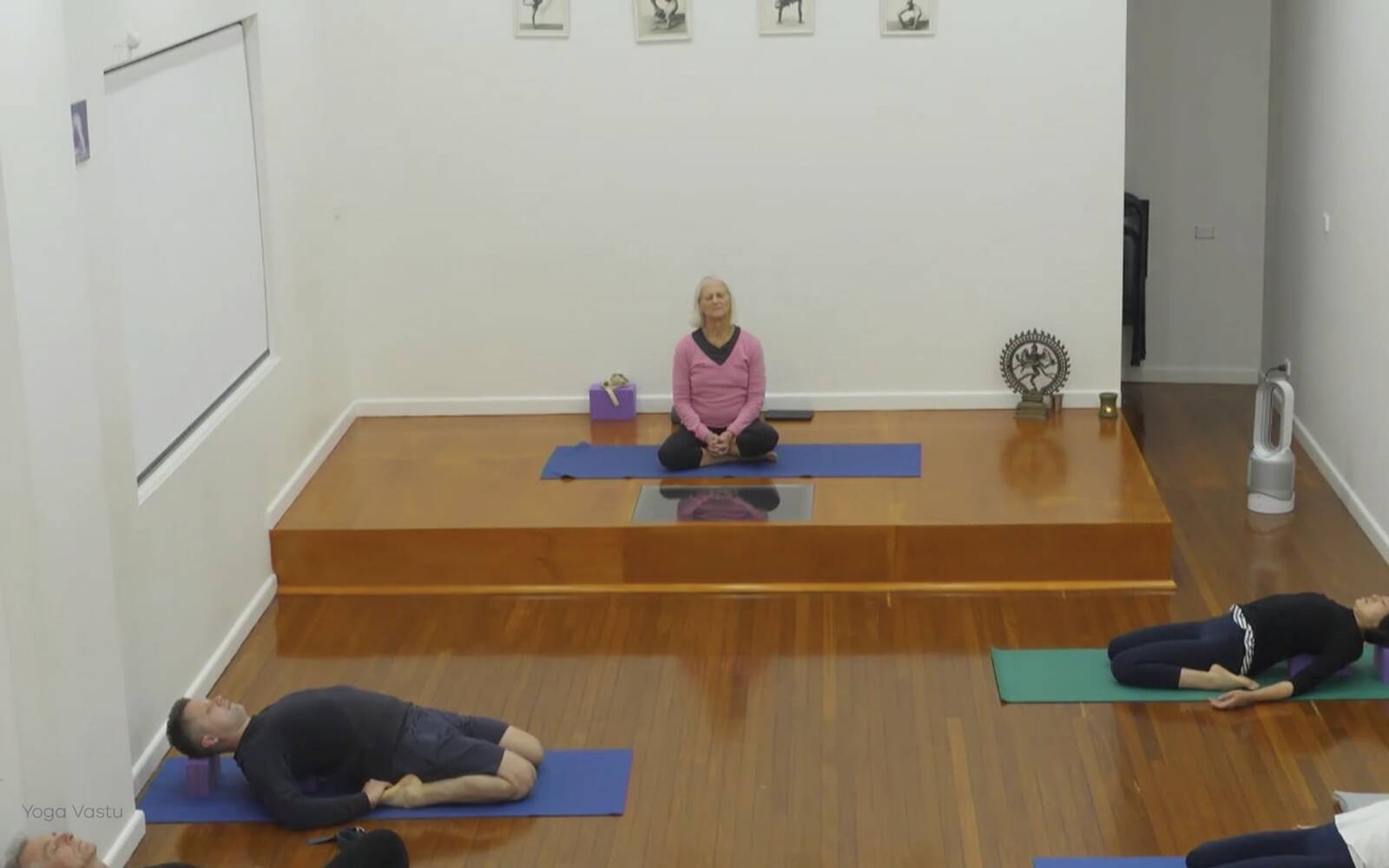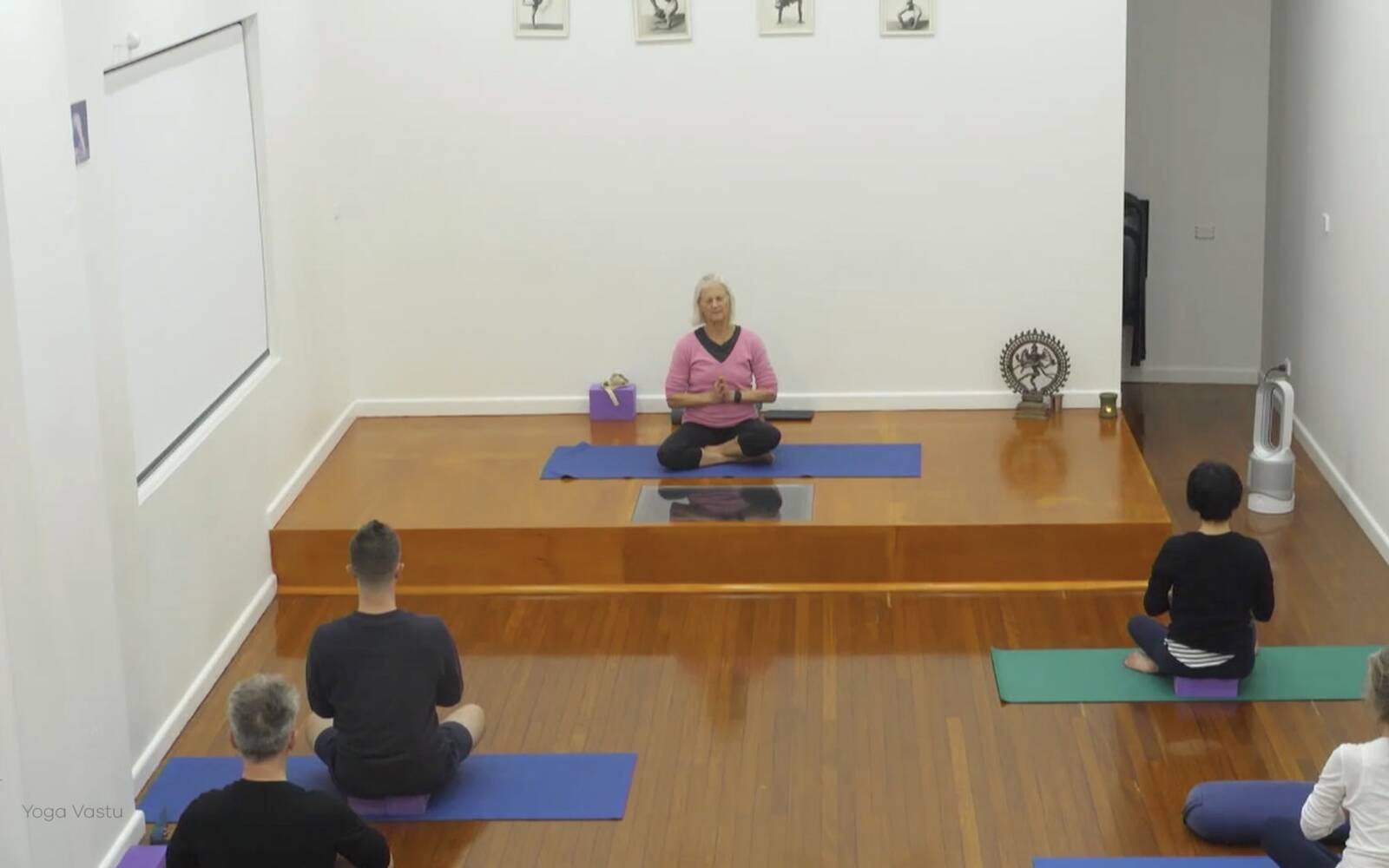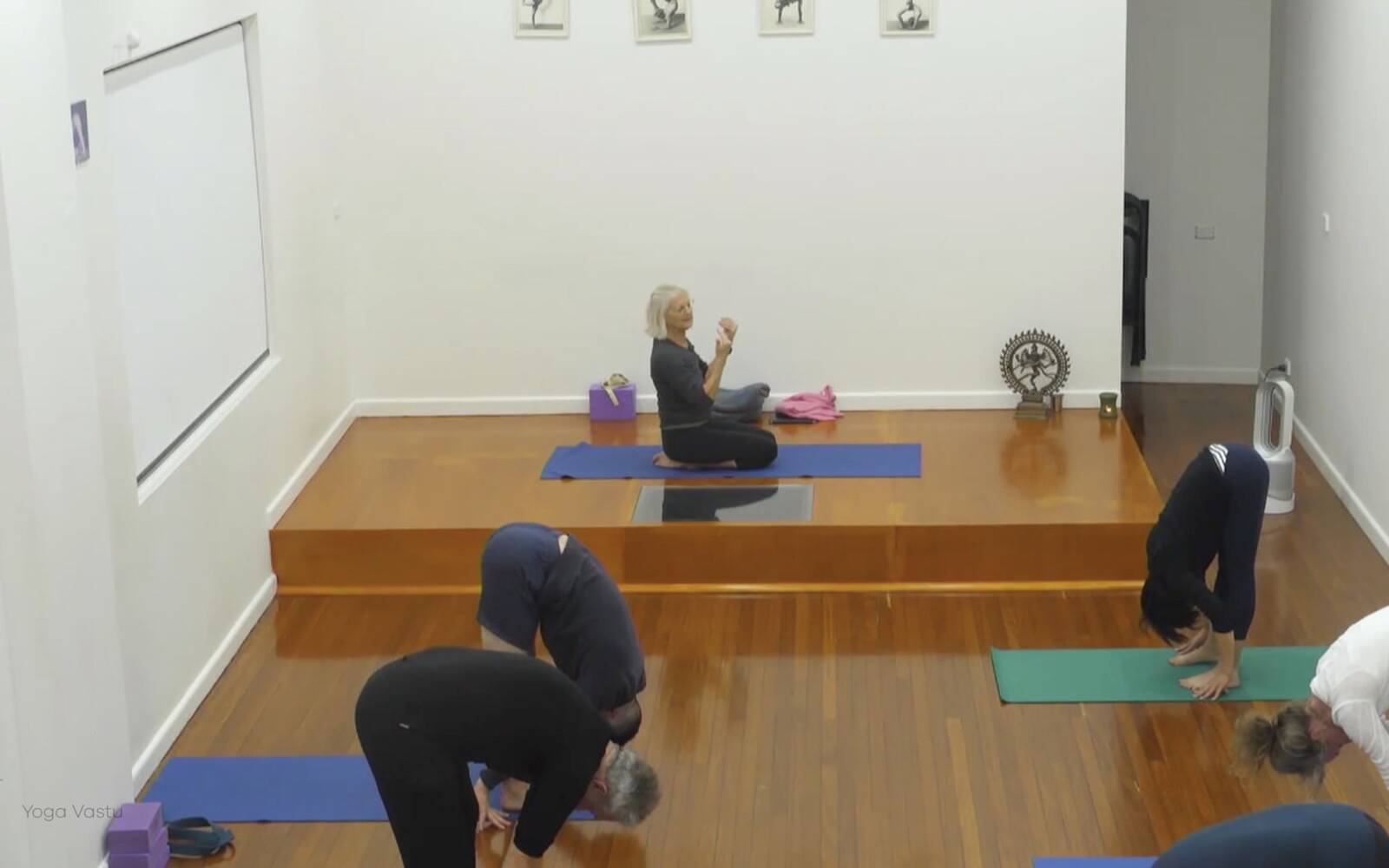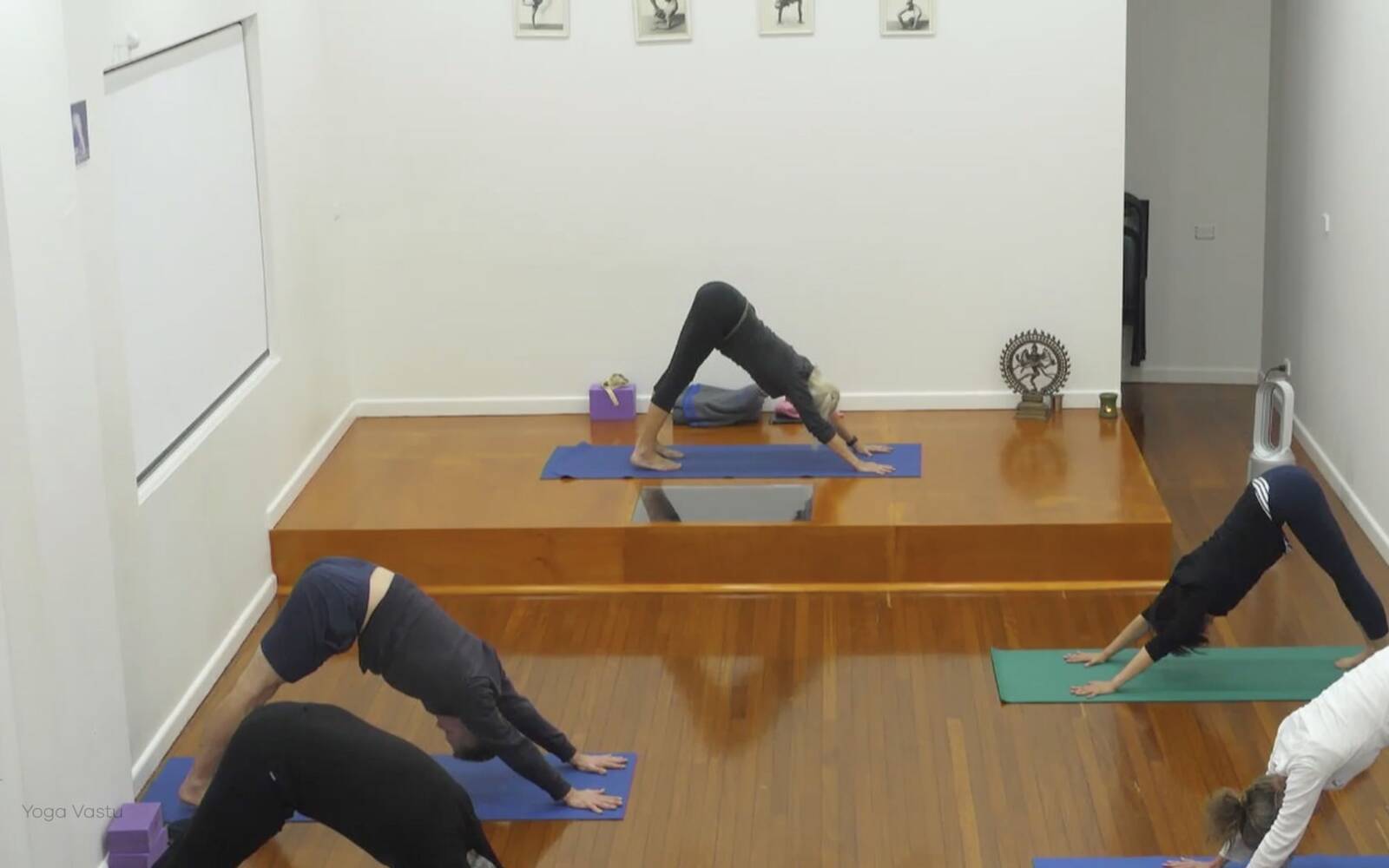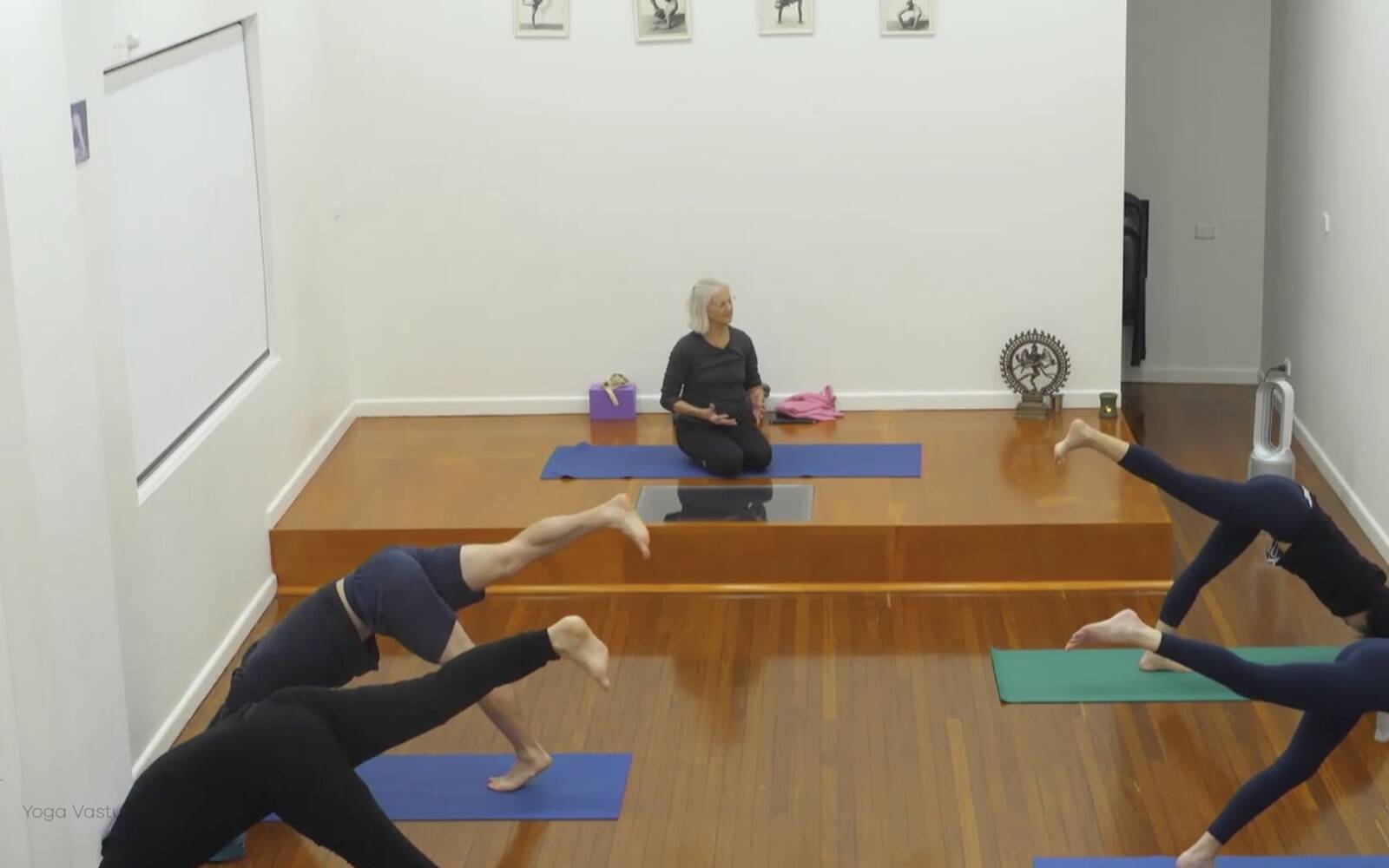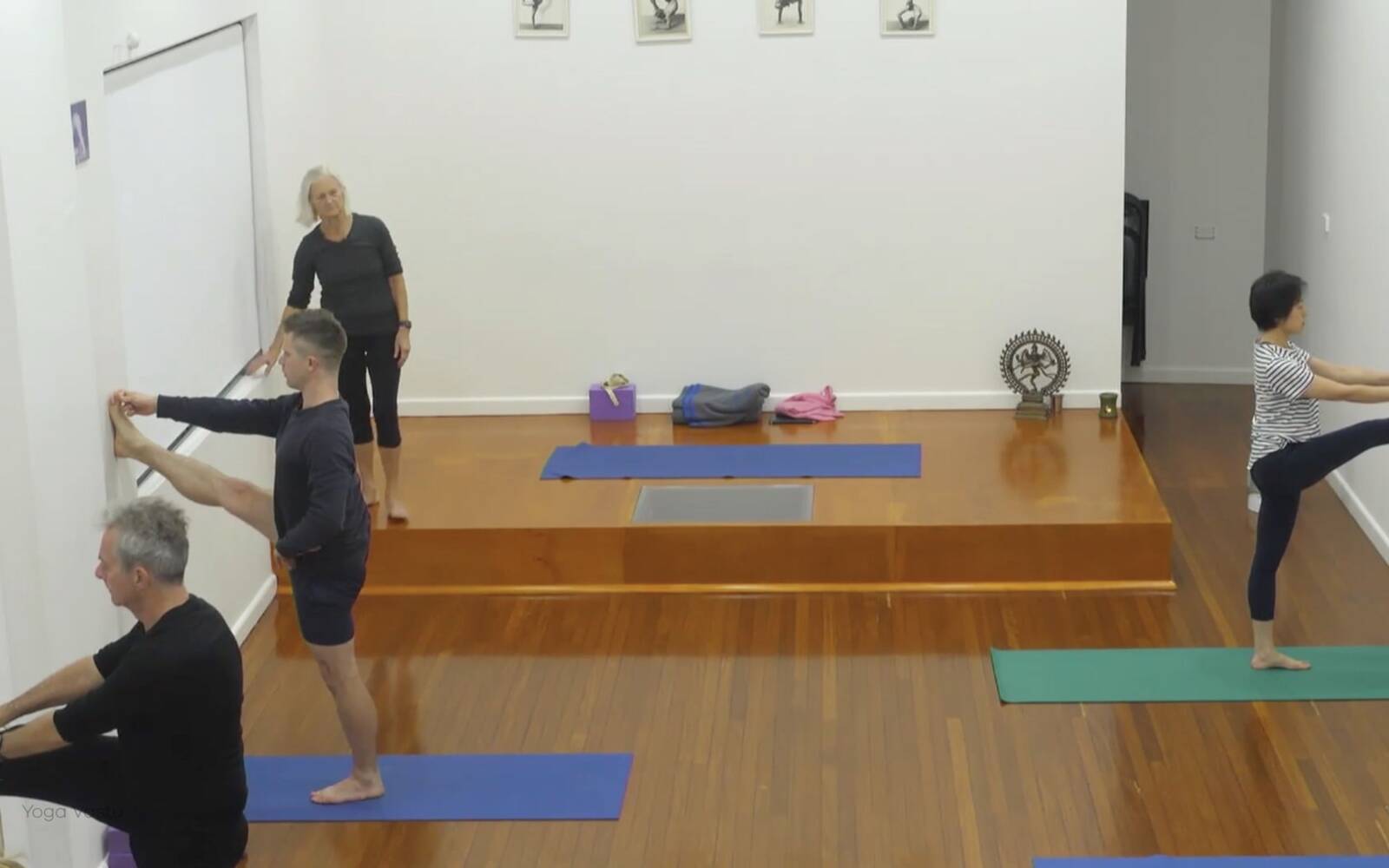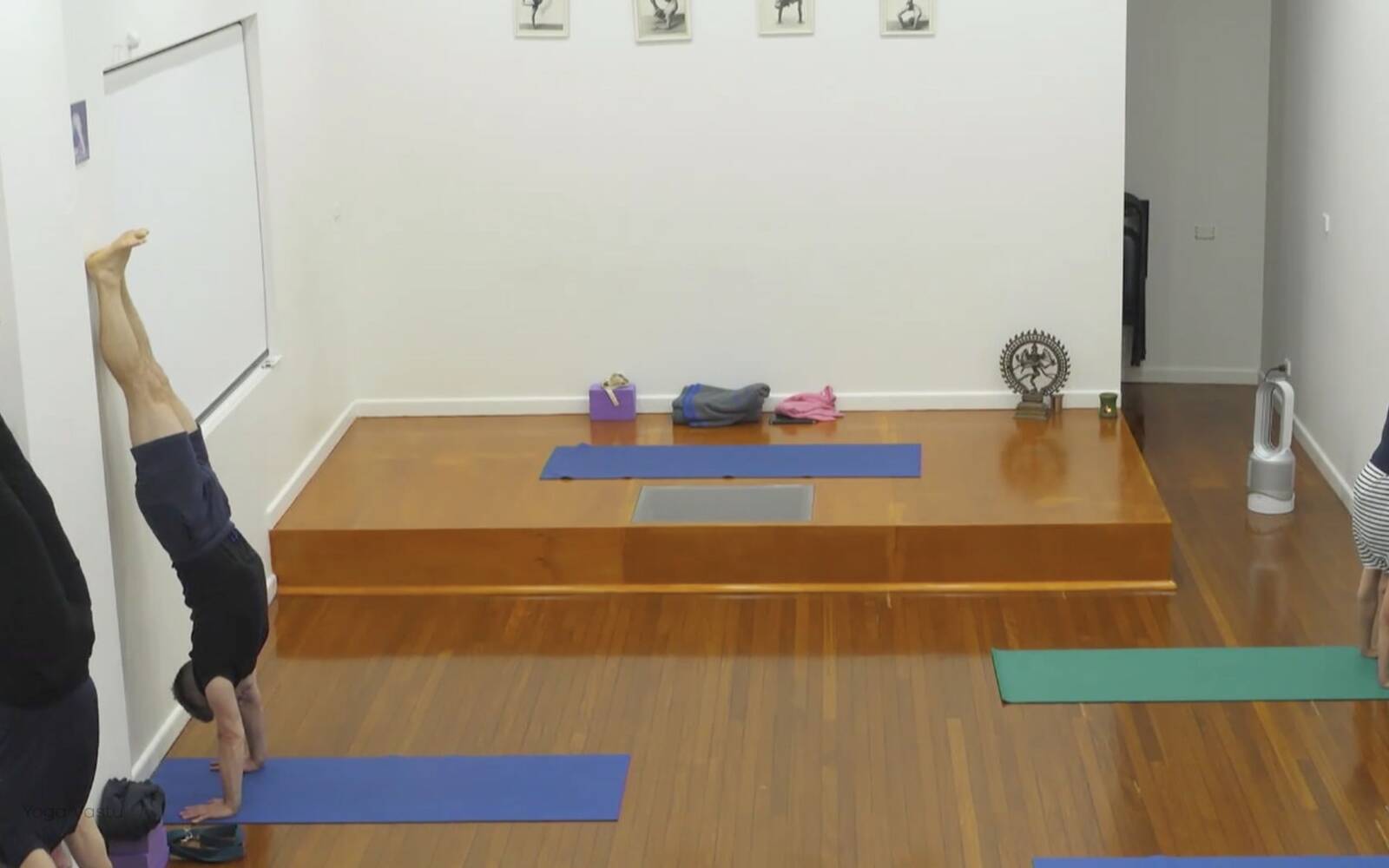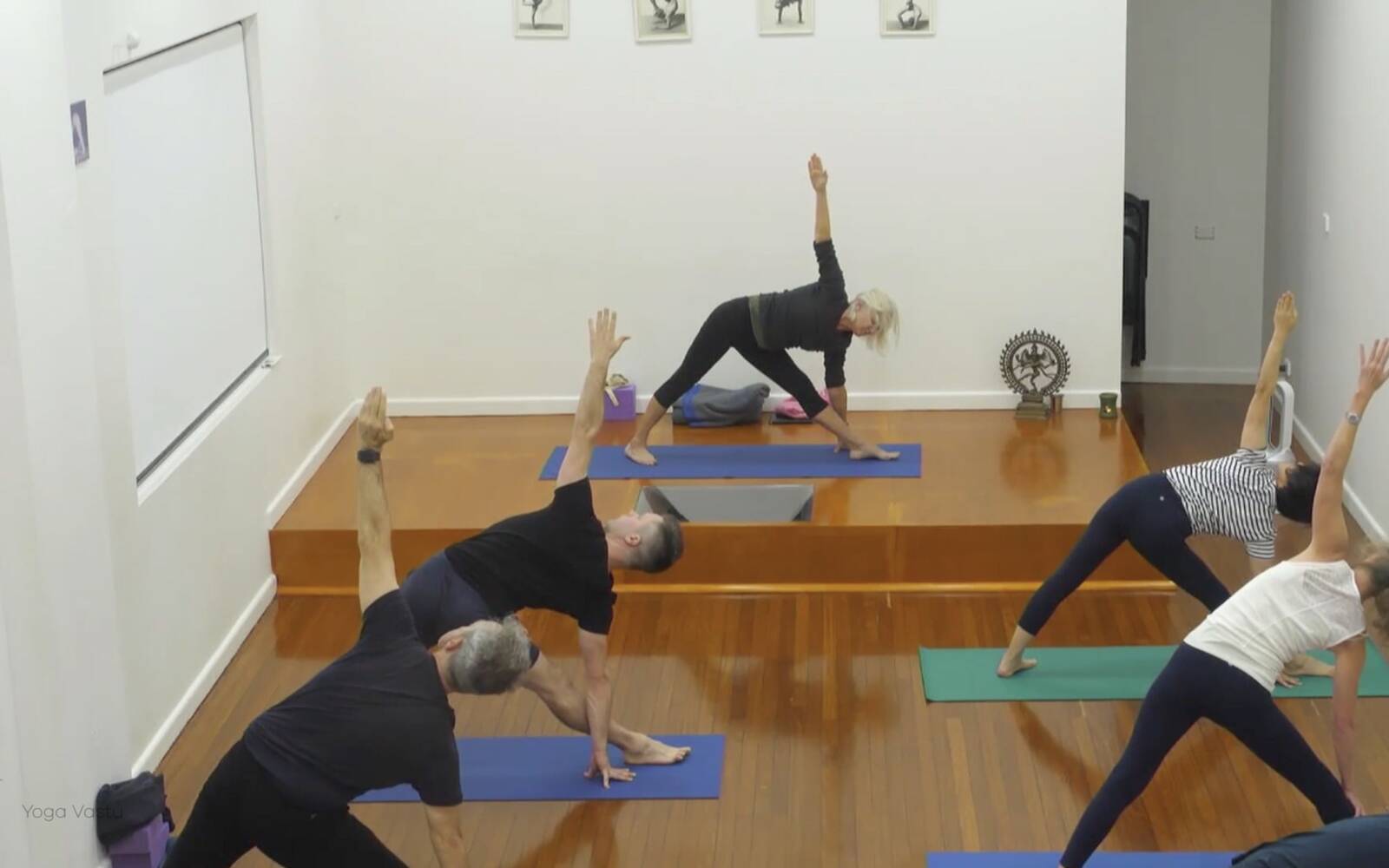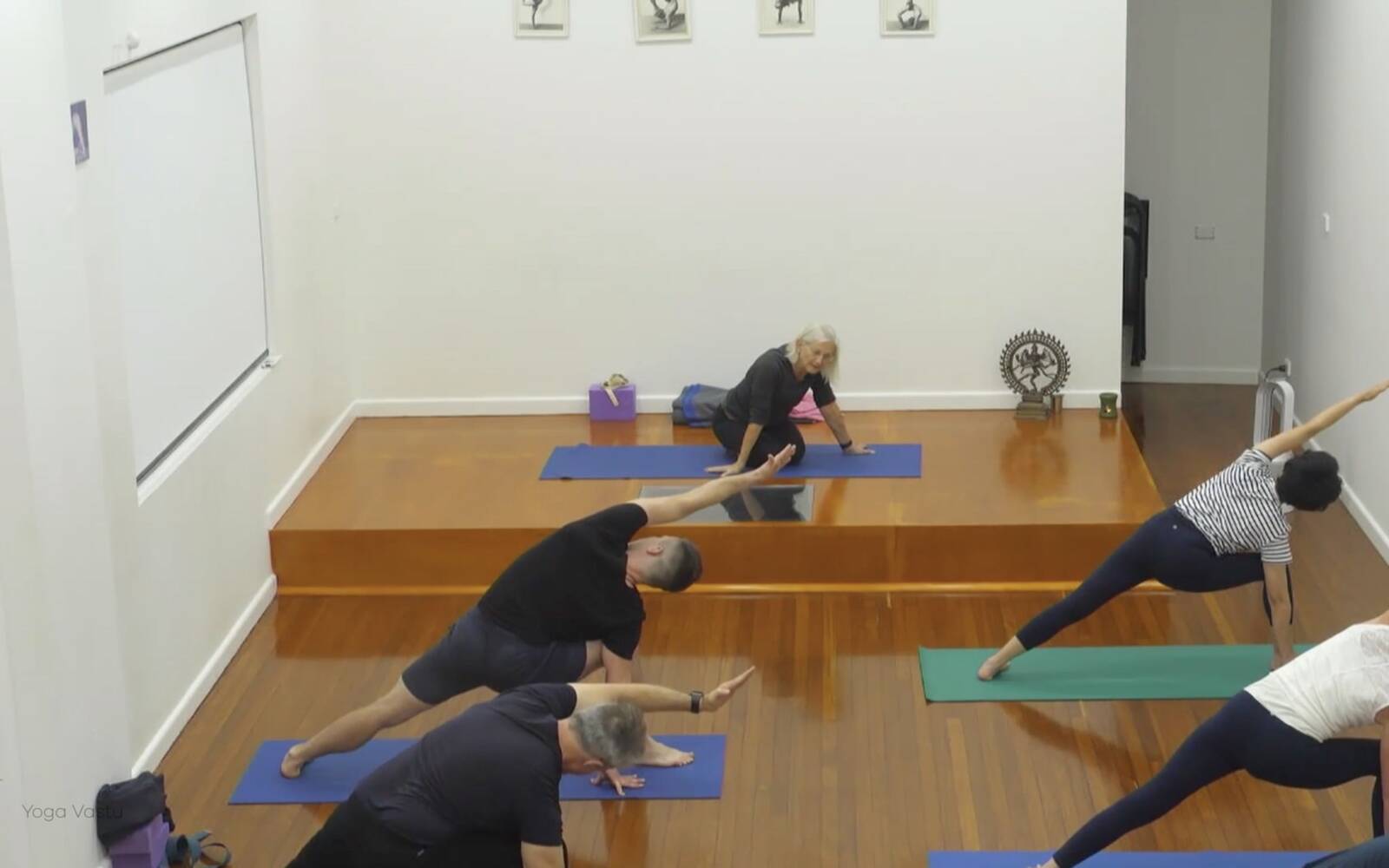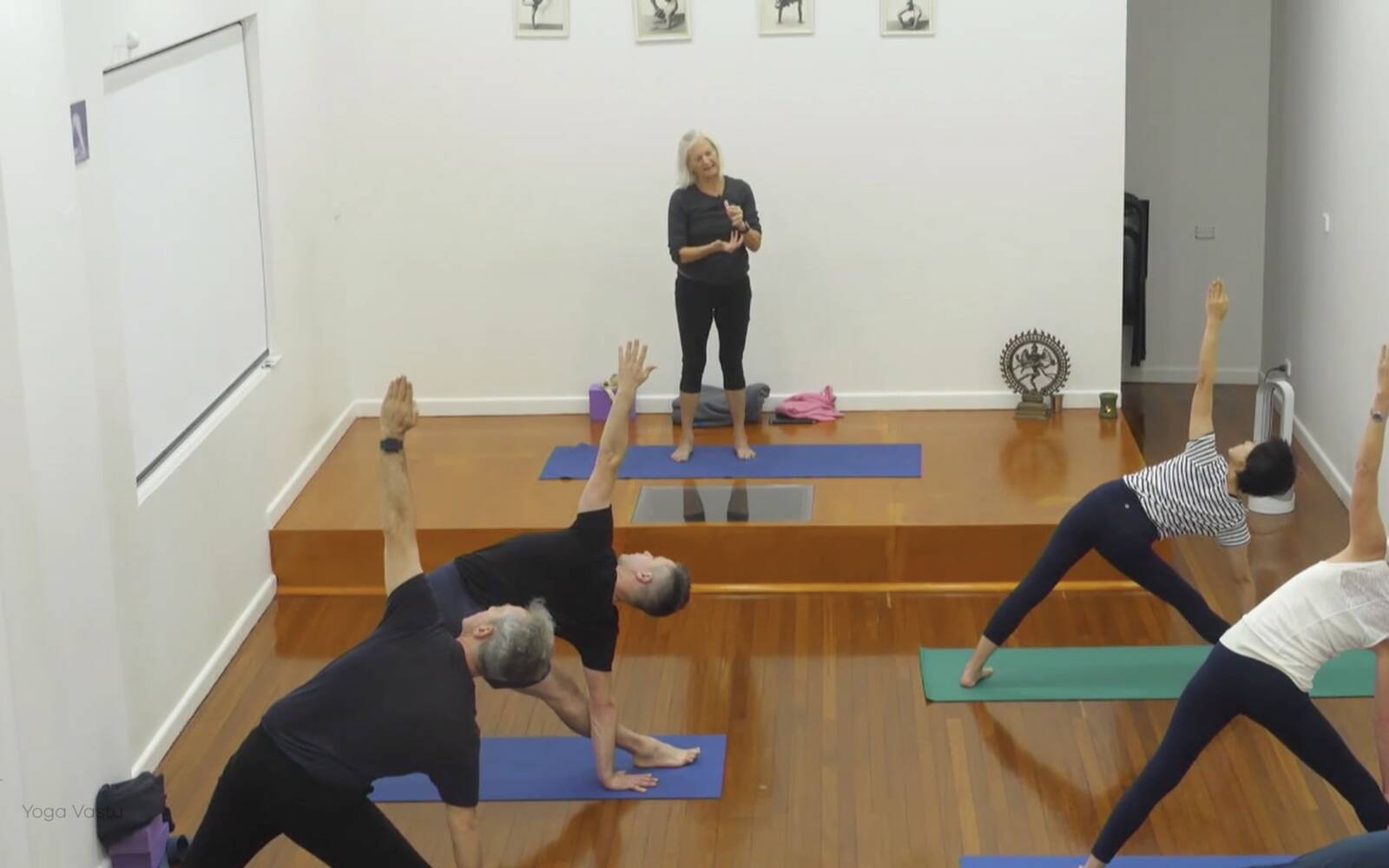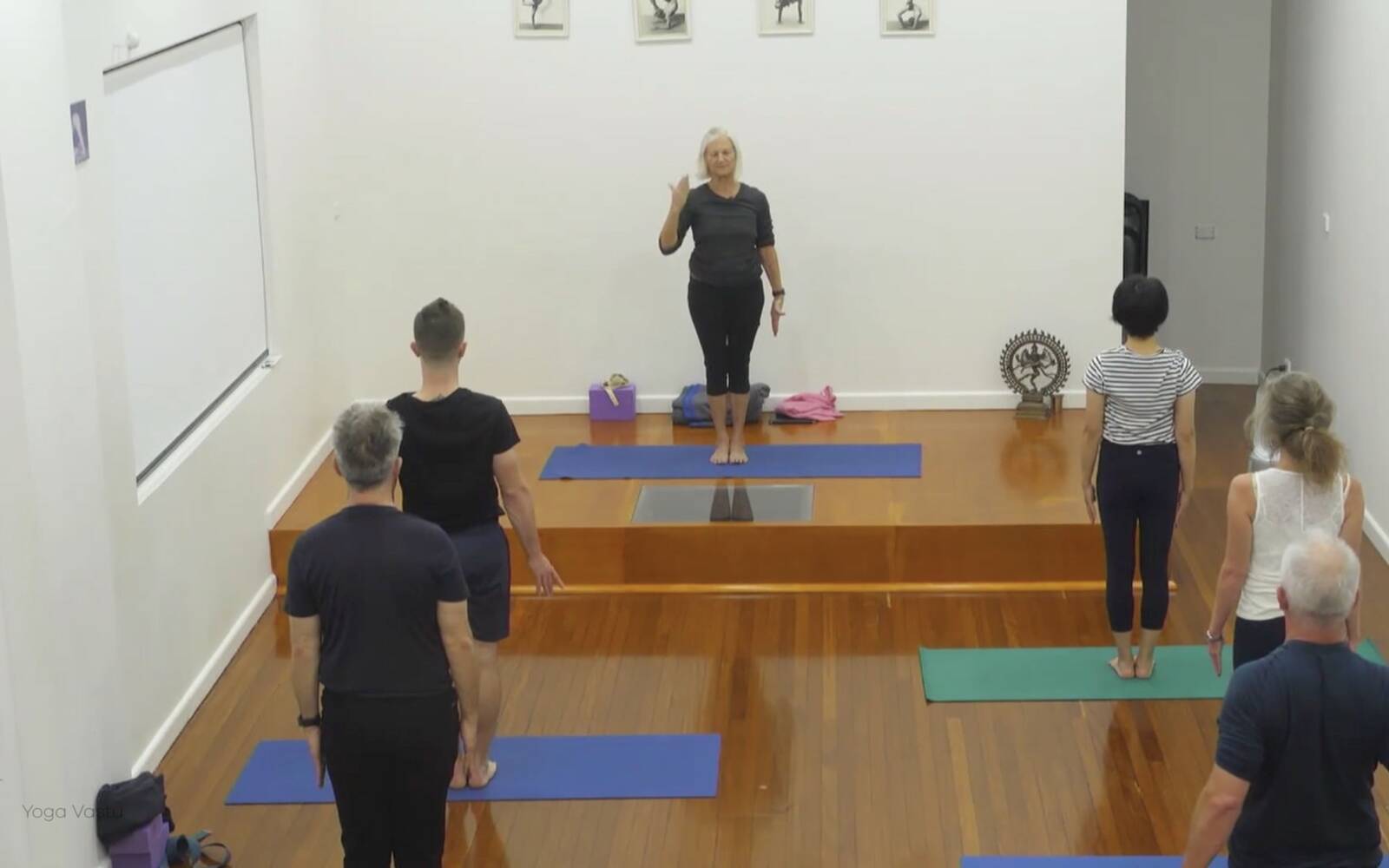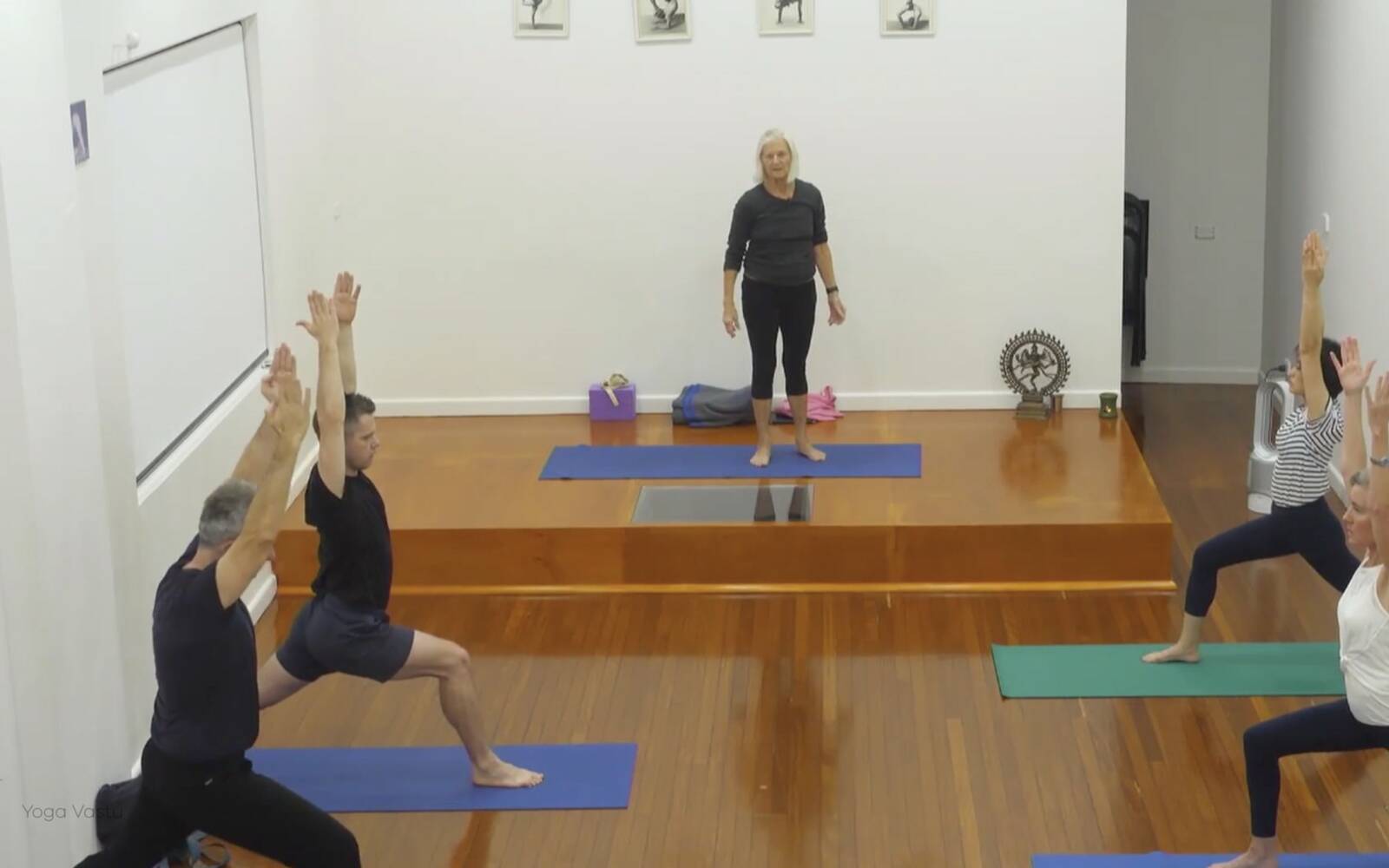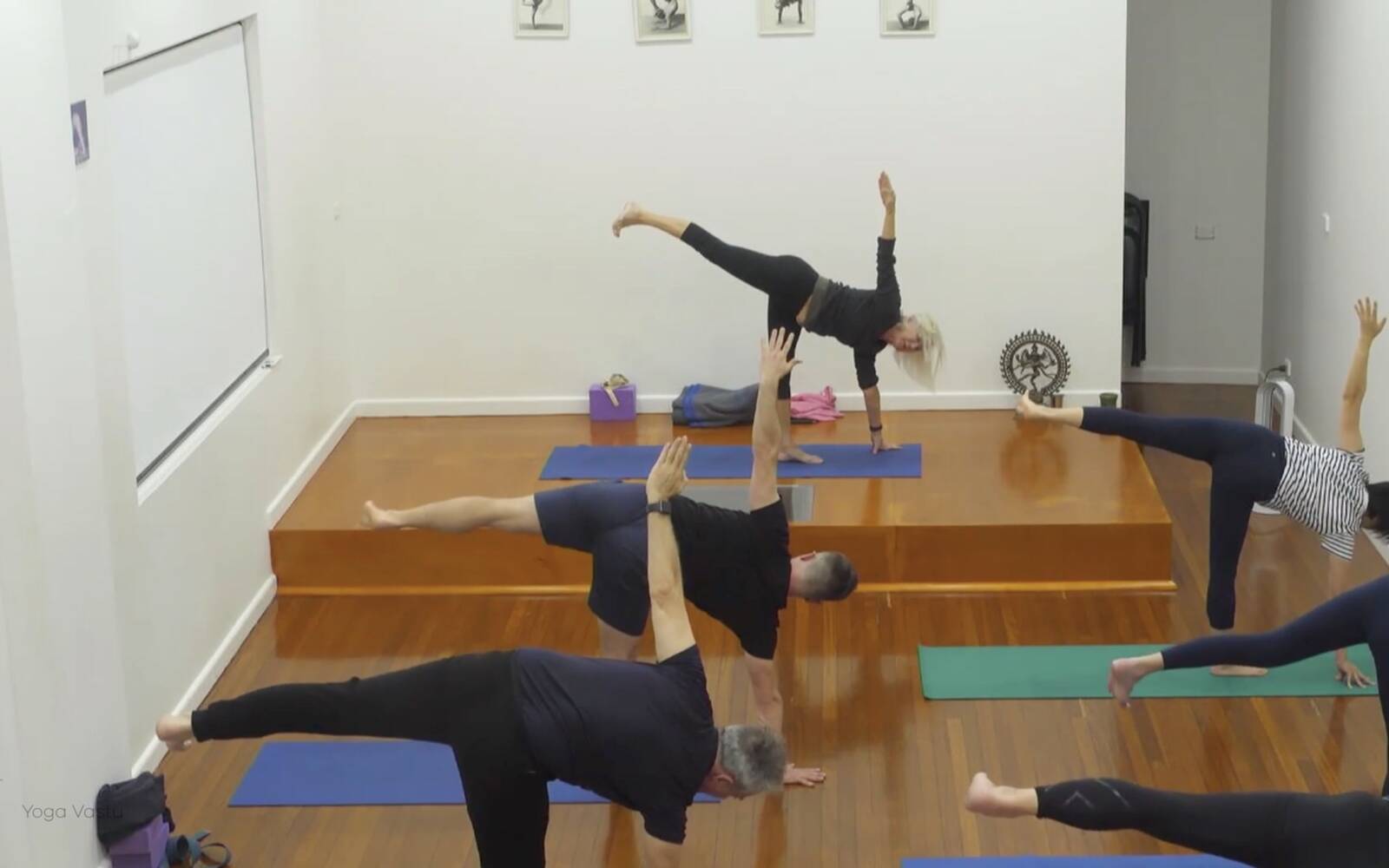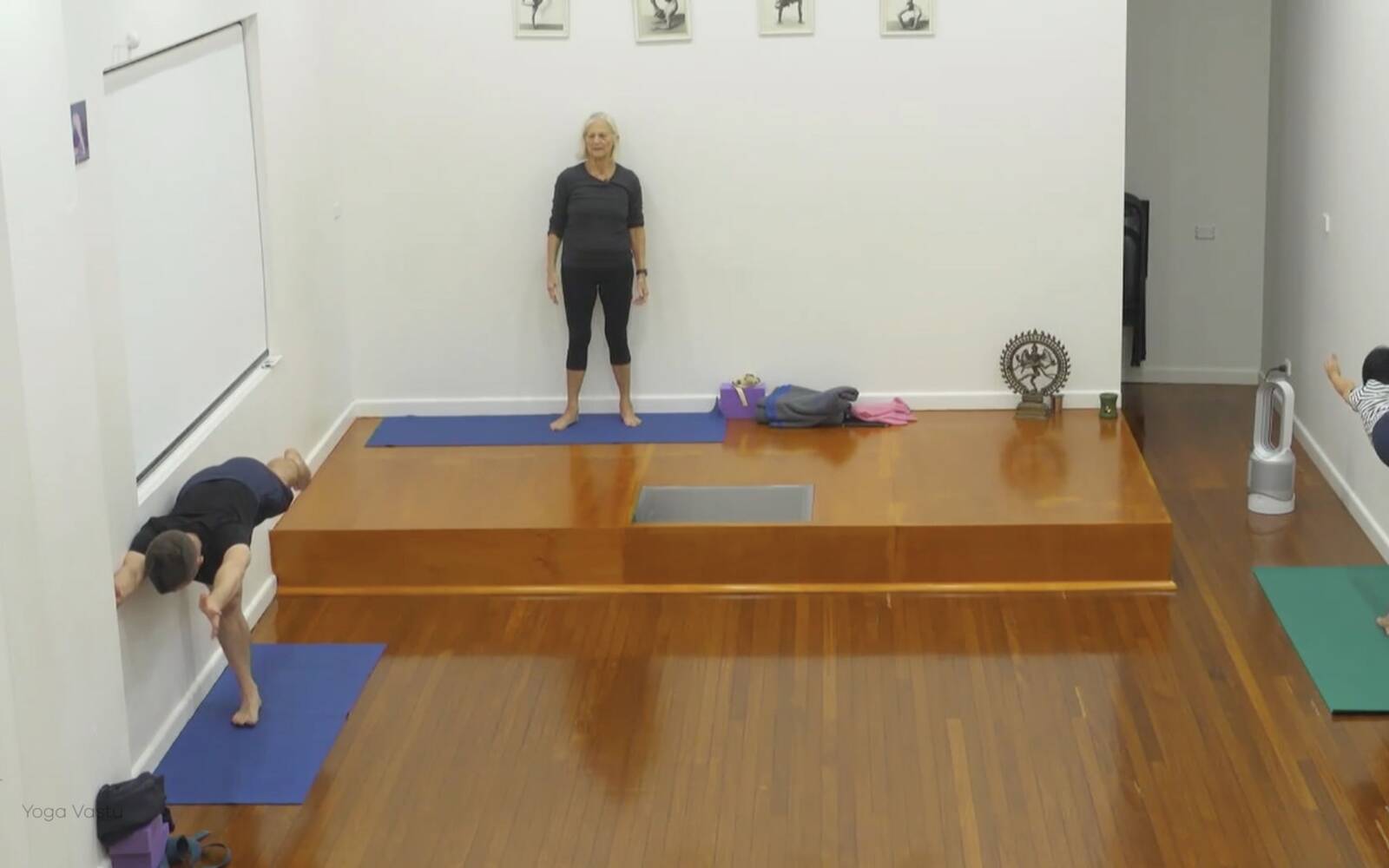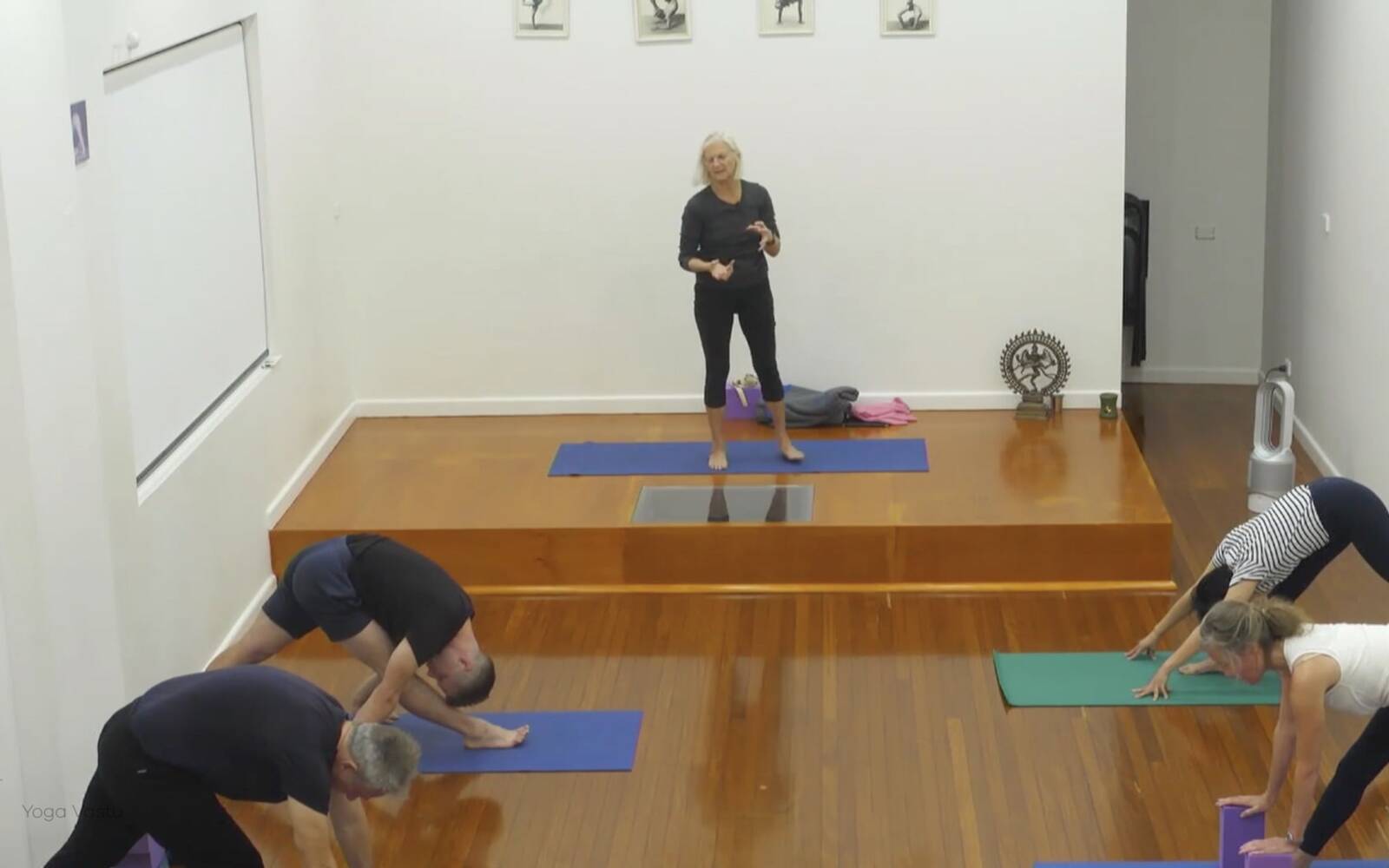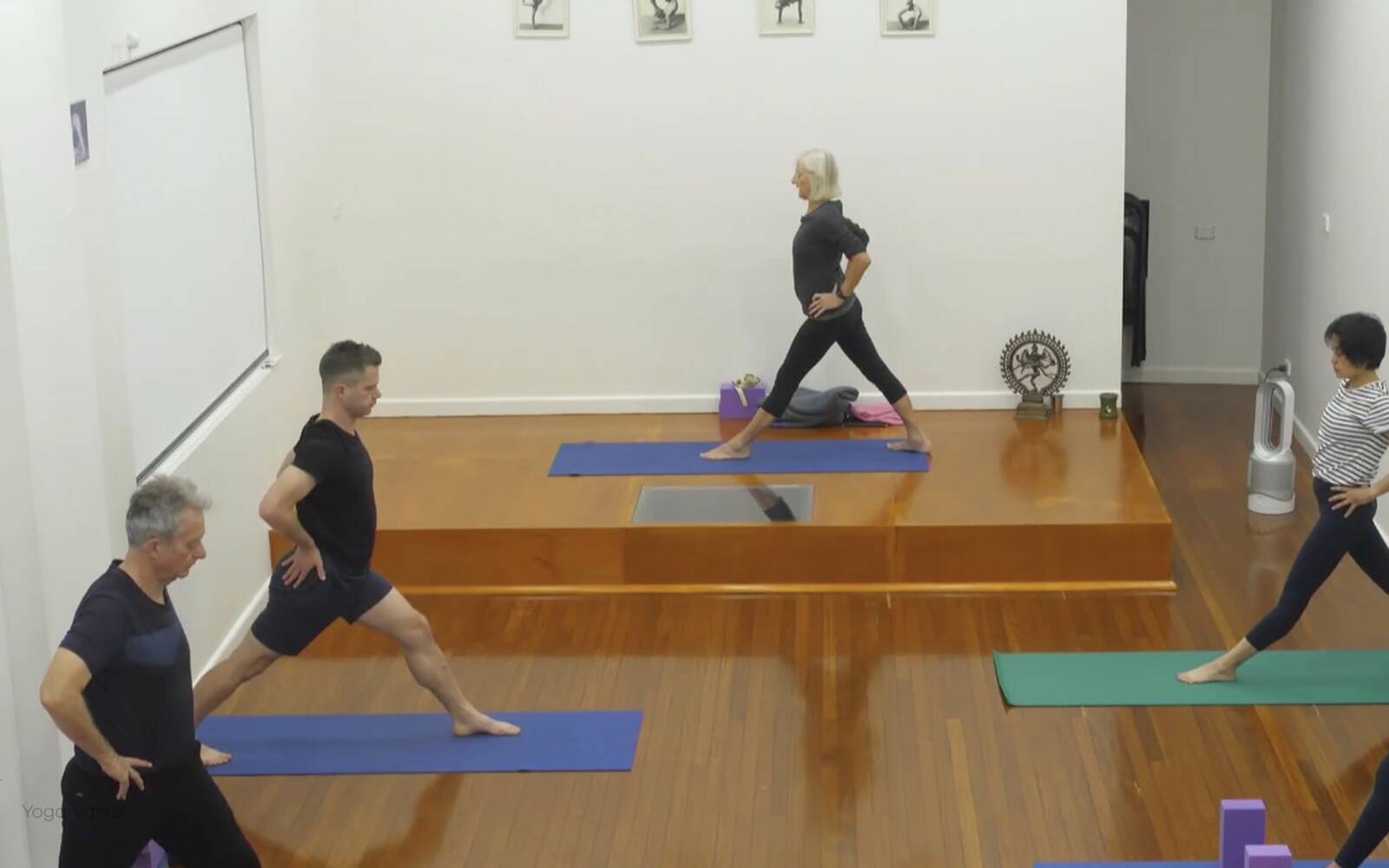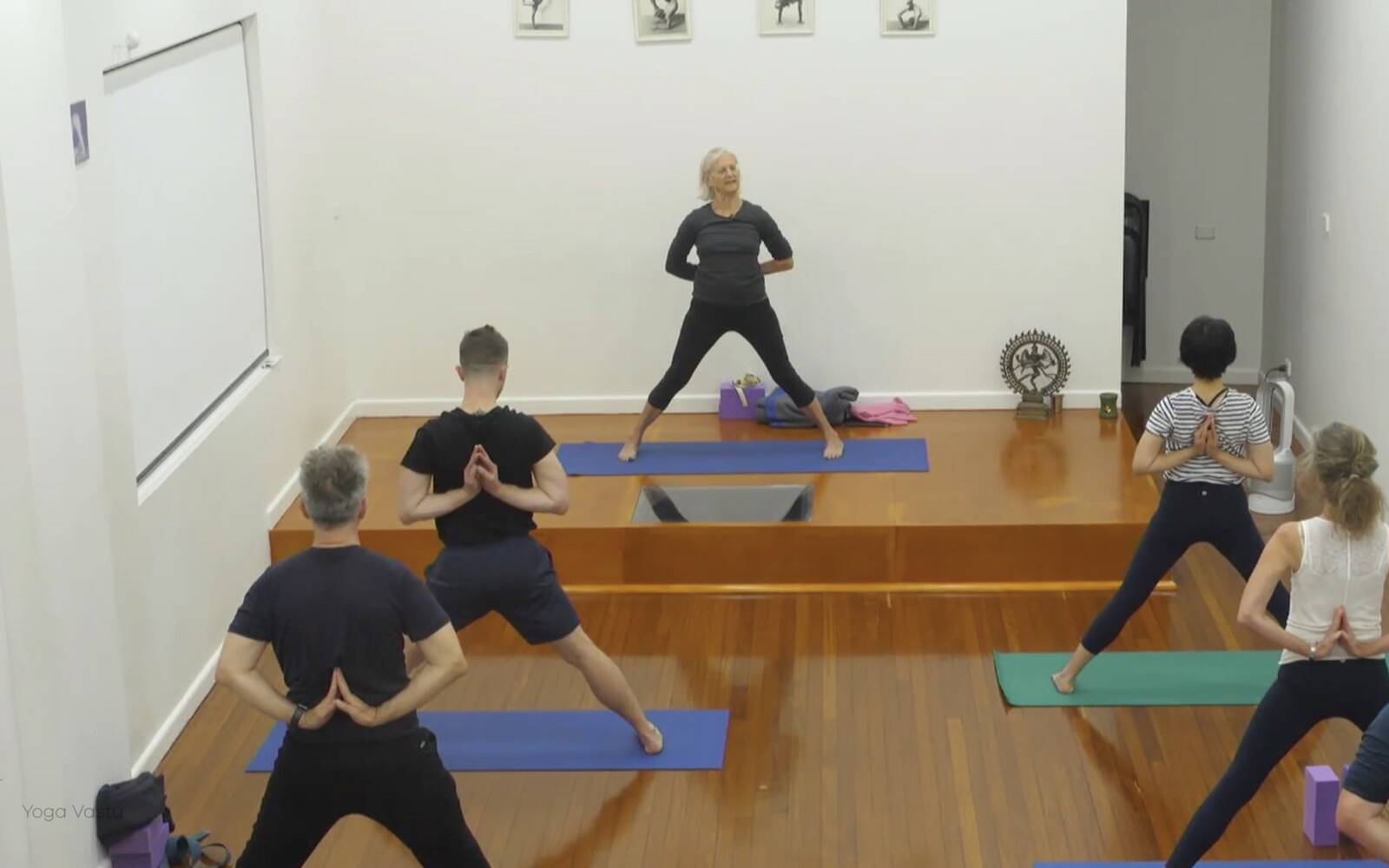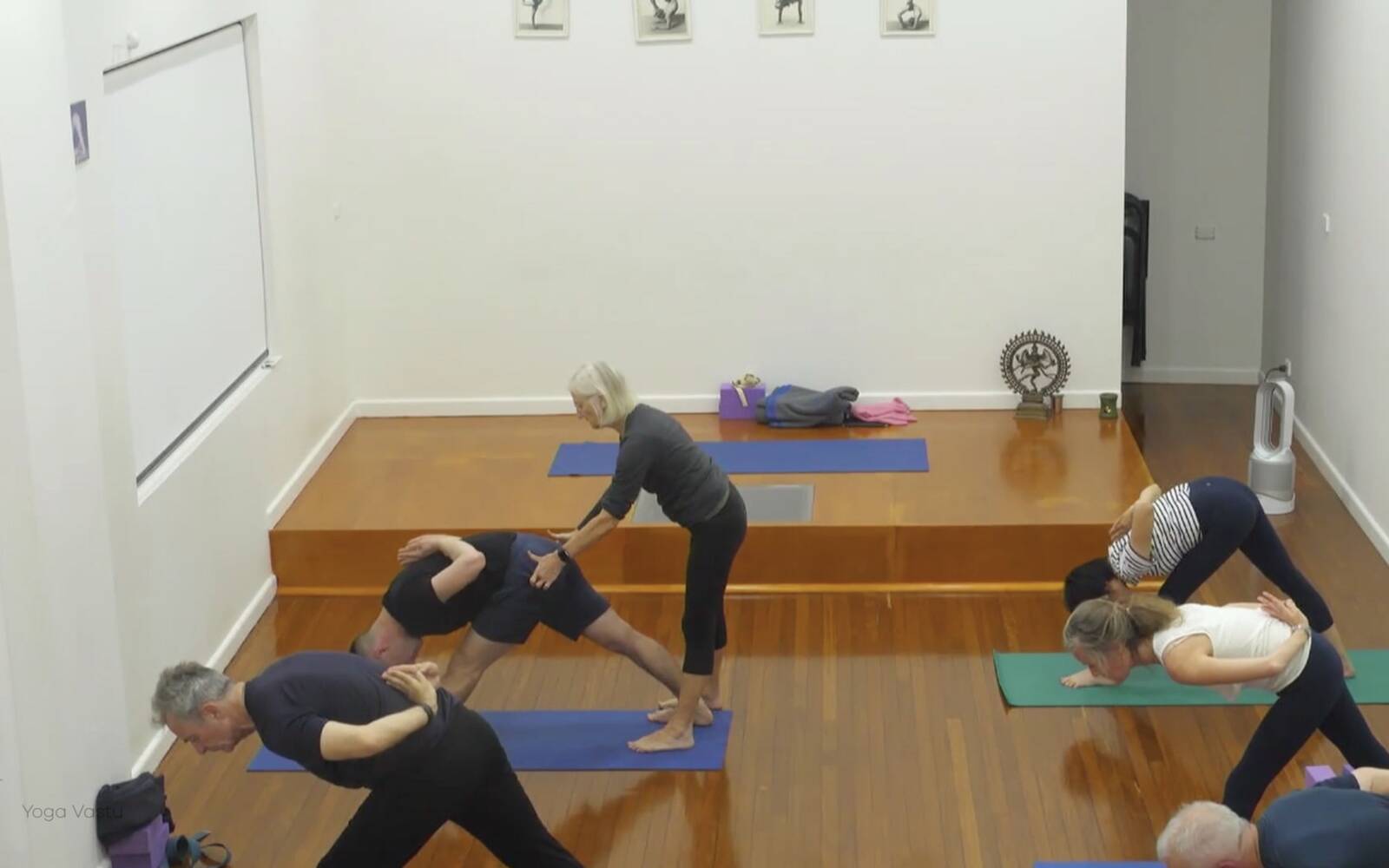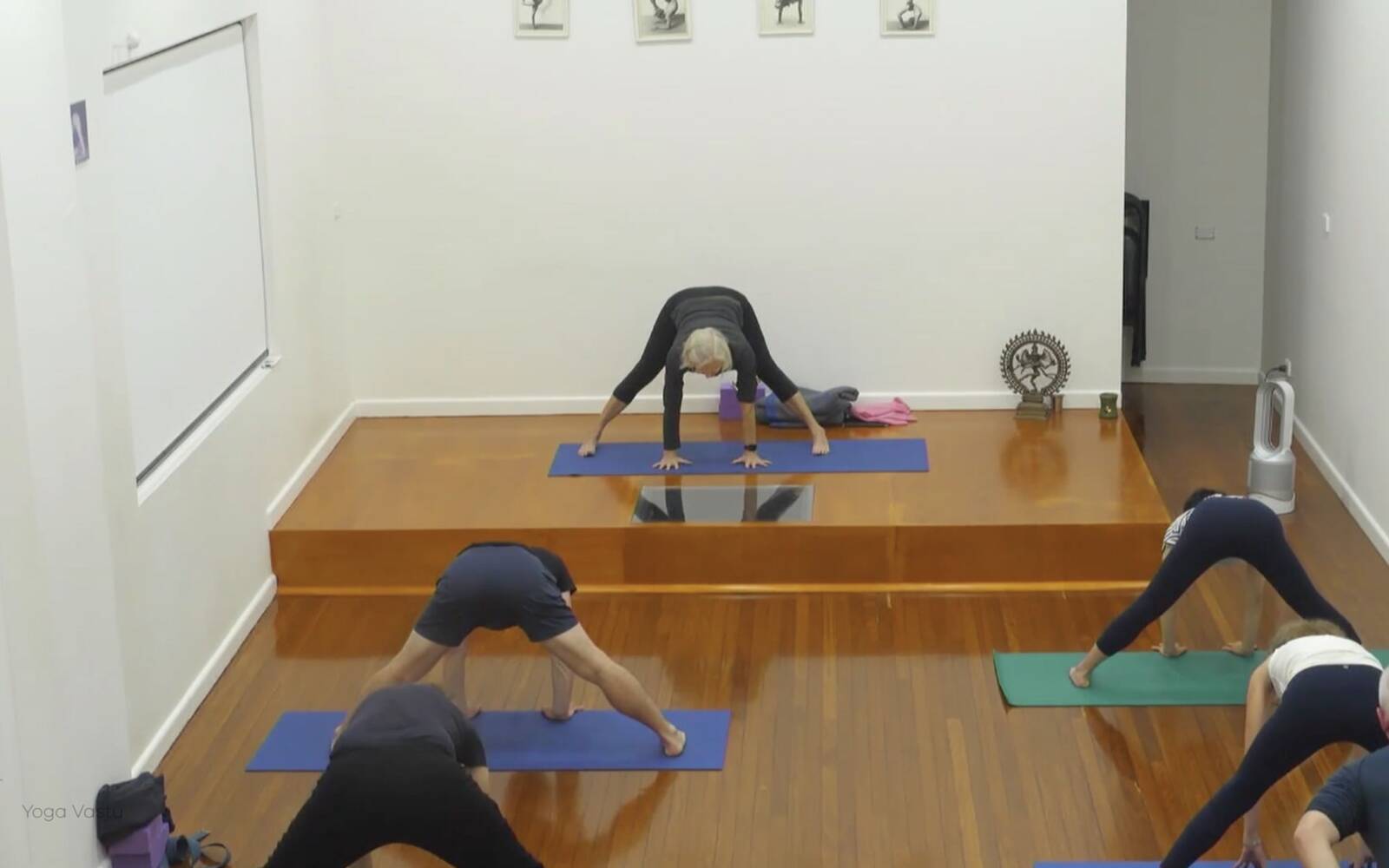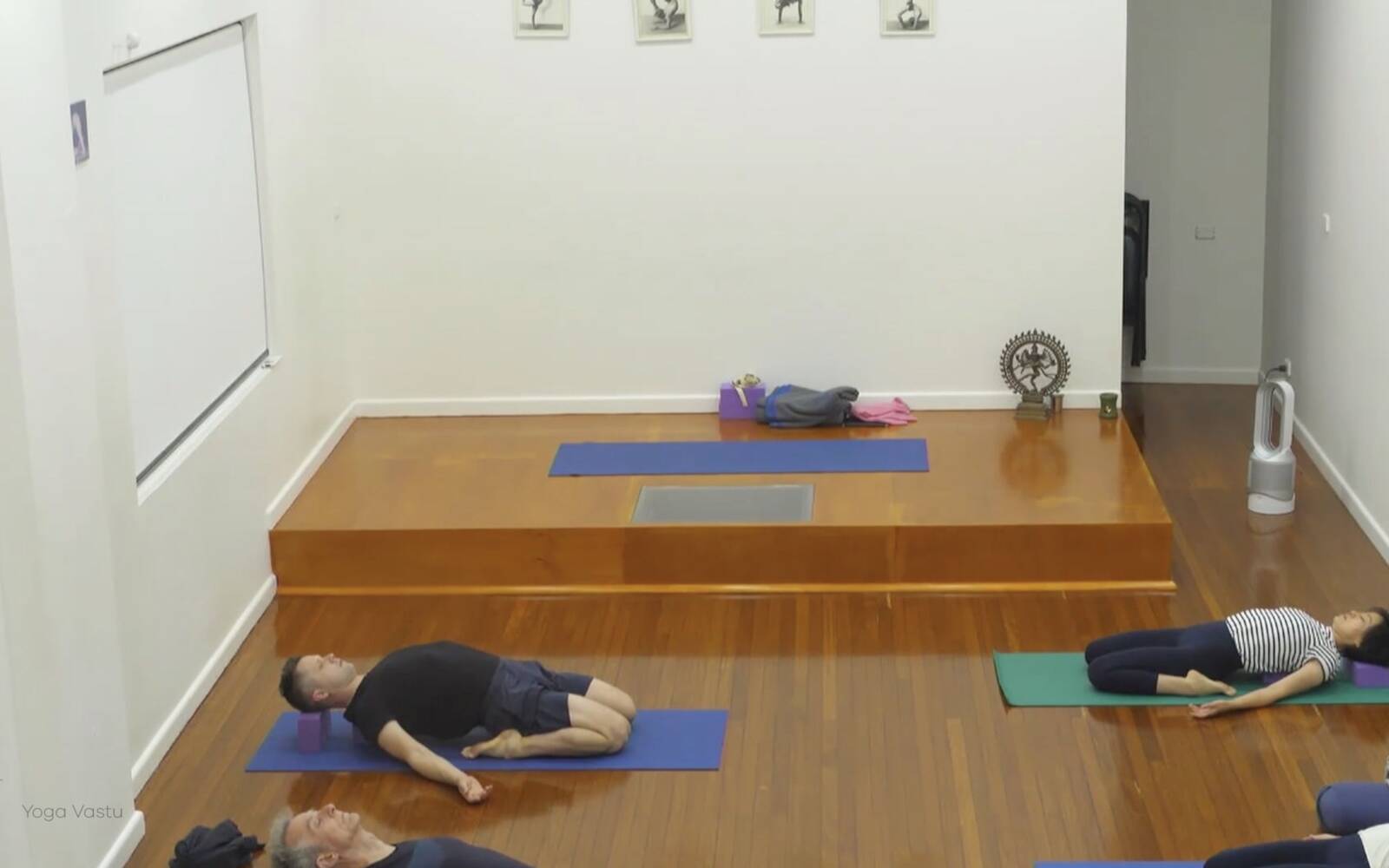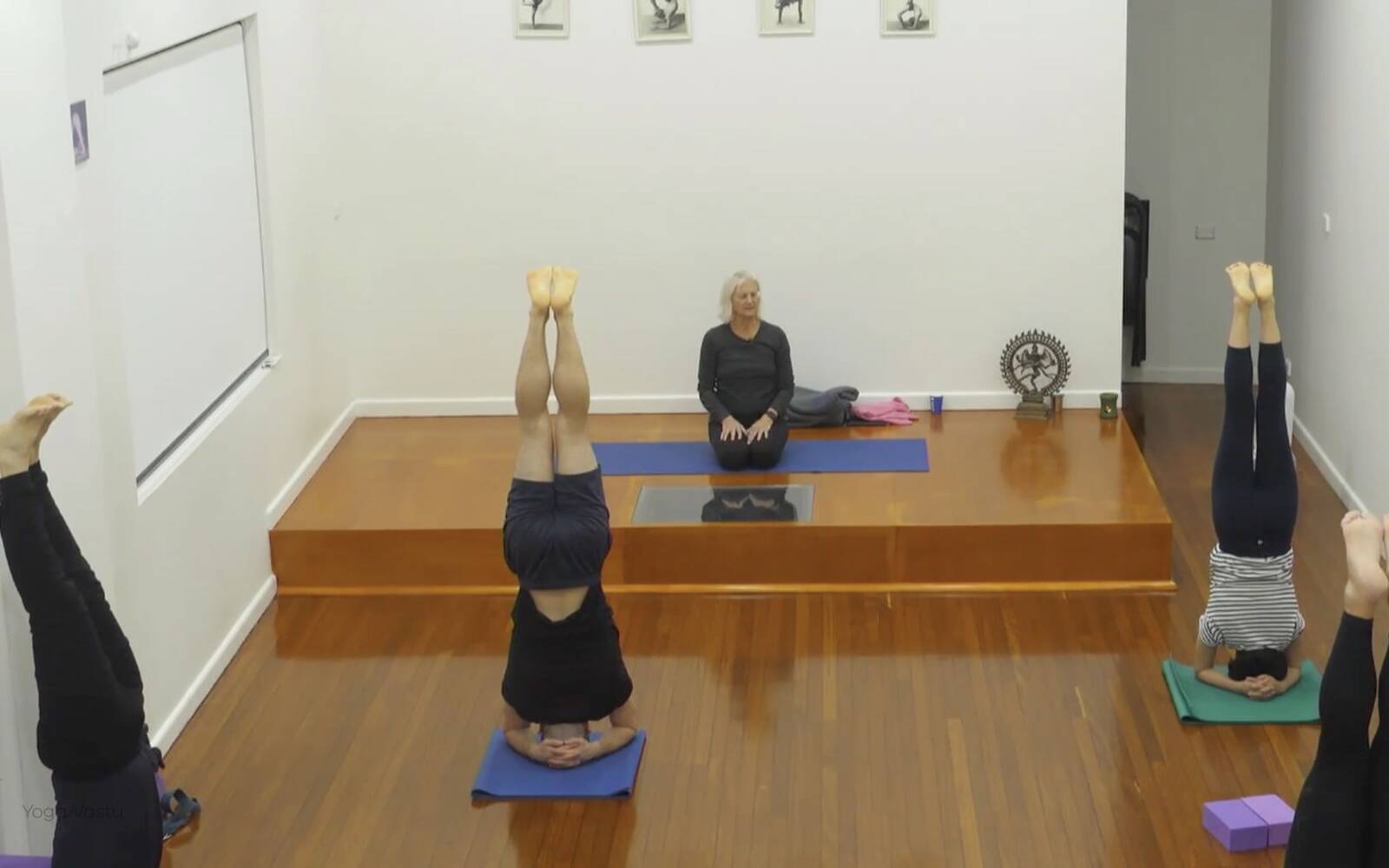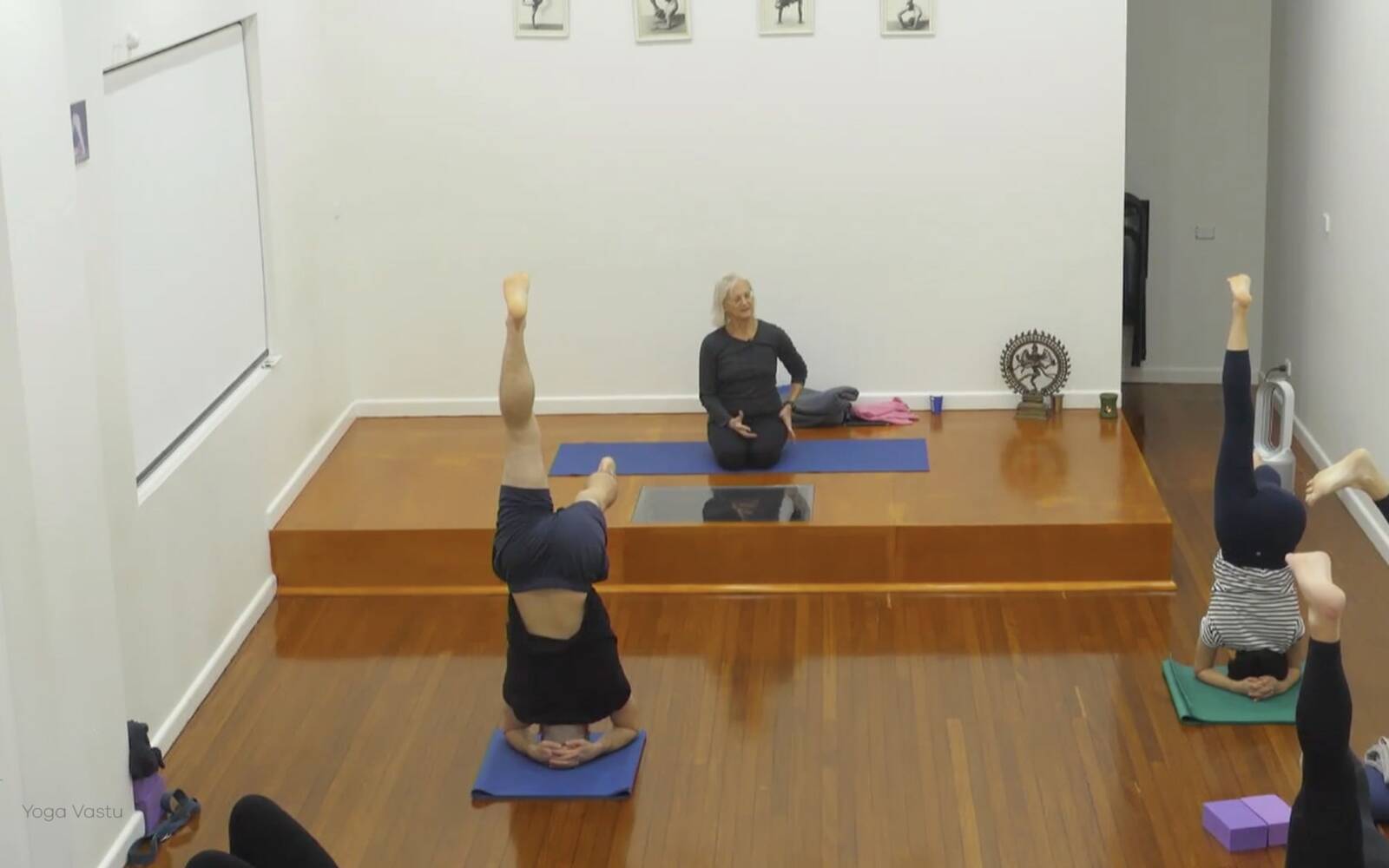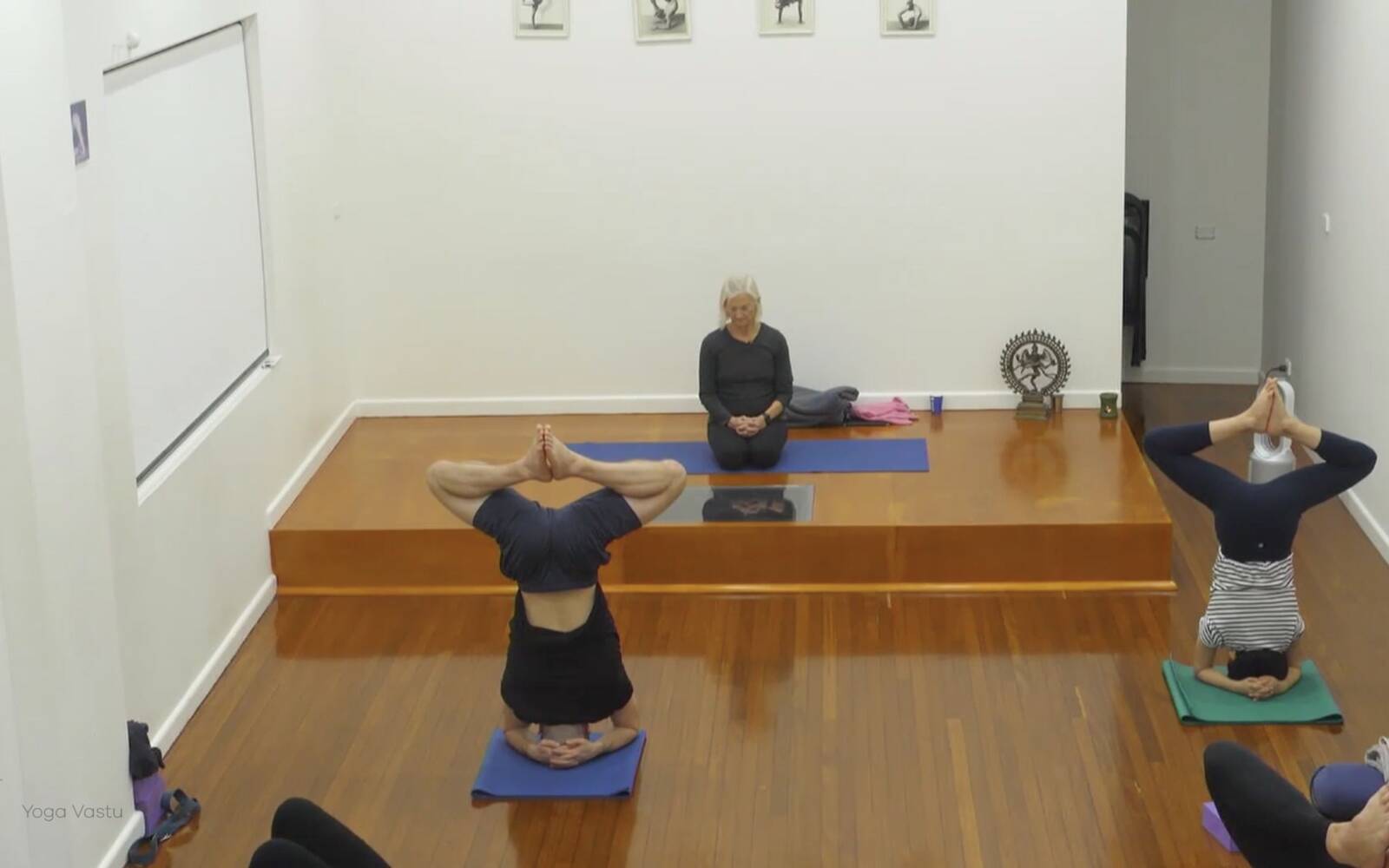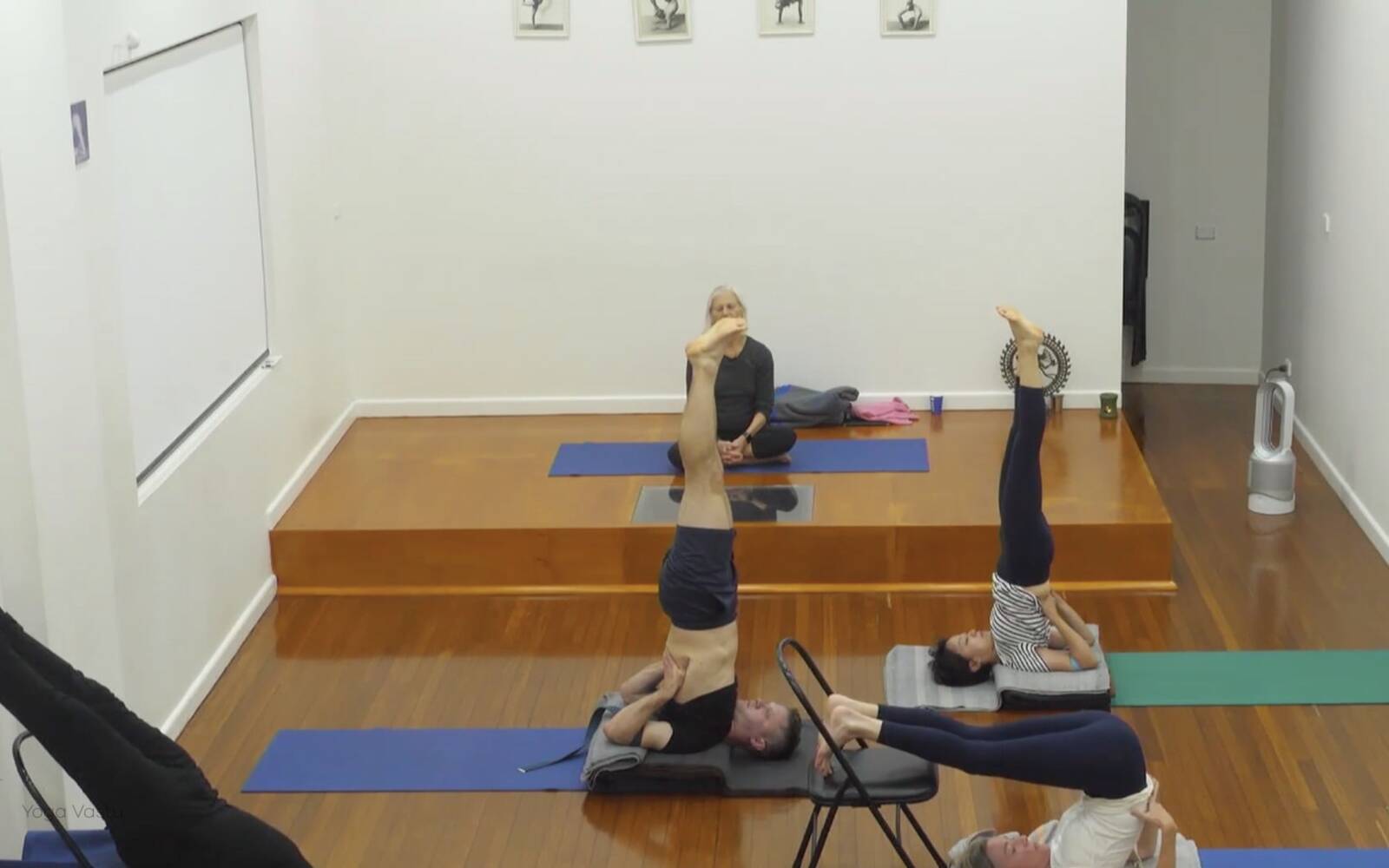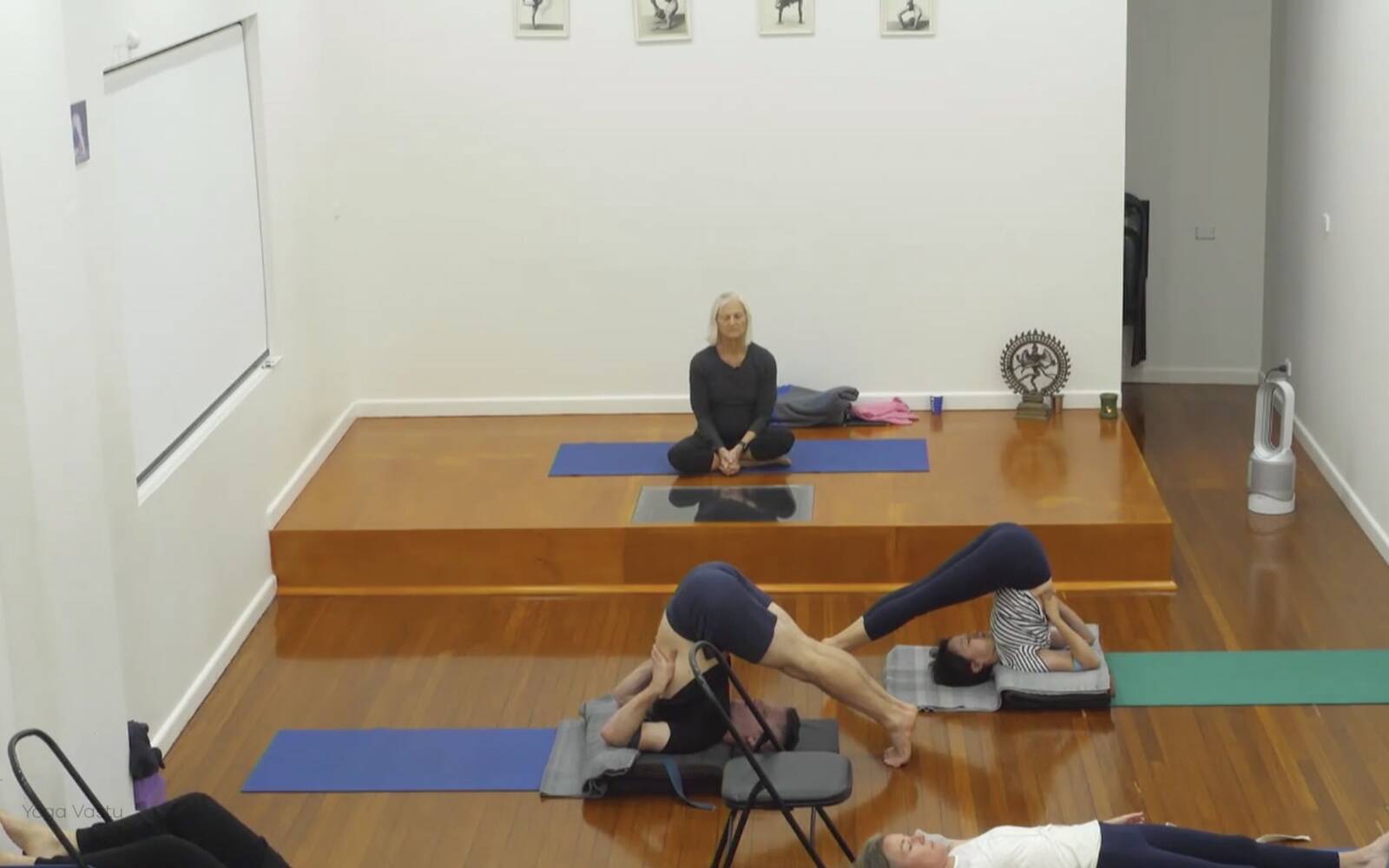Standing poses in Iyengar yoga typically focus on precision, alignment, balance and stability. These poses require a deep awareness of body mechanics and breath control. At higher levels, students focus on the subtleties of posture, engaging muscle groups to achieve balance and strength while maintaining a steady, rhythmic breath. Each pose is held longer, allowing for deeper introspection and more effective conditioning. Props are often used to enhance alignment and access deeper stretches, fostering a profound connection between mind, body, and spirit.
In this class, we will go through a wide variety of standing postures, from the basic to the more advanced. The focus will be not only on alignment but also on balance and stability.
Our standing pose session will start with some of the more basic poses to warm up and work on our alignment while gently introducing some balance and stability work. These are poses such as Utthita Trikonasana, Utthita Parsvakonasana, Tadasana, Virabhadrasana 1 and 2. This sequence of poses allows us to gently progress towards postures that require more balance and stability, such as Ardha Chandrasana, Virabhadrasana 3, and Parivritta Trikonasana. While Parivritta Trikonasana isn’t a purely balancing pose like the other two, it does require a fine sense of balance because the twisting action tends to have a destabilising effect that we need to counteract.
After the standing pose section of the class, we will go through some variations of Sirsasana, including Eka Pada Sirsasana and Baddha Konasana in Sirsasana. Then, we’ll move on to some more cooling and relaxing inversions like Ardha Halasana and Sarvangasana, and we’ll finish with a few minutes of breathing meditation Savasana.
Video stills from this sequence
